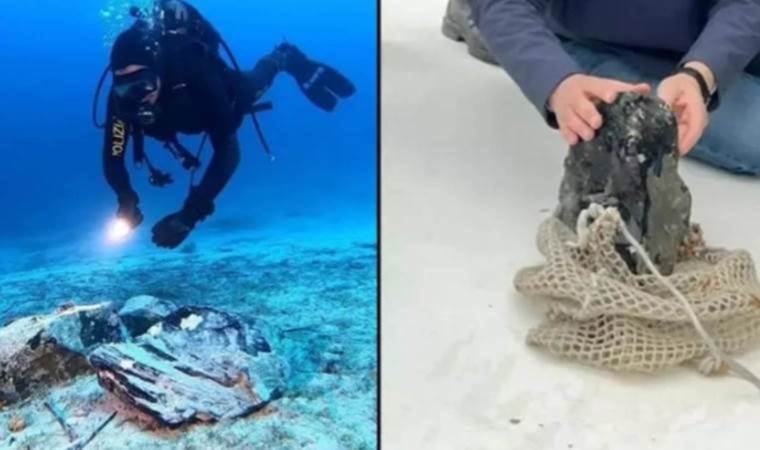Found at the bottom of the Mediterranean, aged 8,000 years!
Near the coast of Capri Island, located close to the Gulf of Naples in southern Italy, a rare discovery that could change the course of history has been made.

Artifacts believed to be from a Neolithic shipwreck, dating back between 5,000 and 8,000 years, have been found alongside objects made of volcanic glass.
Italian marine archaeologists, in collaboration with the Naples Police Department, have retrieved objects made of shiny, black volcanic glass known as obsidian. These objects were formed from rapidly cooled lava.
The most significant find at the seabed was an item weighing about 8 kilograms and measuring 28 x 20 x 15 centimeters. Located at a depth of 30 to 40 meters, the function of this object is still being researched. The markings and carvings on its surface confirm it was made by human hands.
Mariano Nuzzo, Director of Archaeology, Fine Arts, and Landscape for the Metropolitan Area of Naples, emphasized the need for a thorough examination of the seabed in November. This investigation could potentially confirm the existence of the ship's hull or other related materials.
If marine archaeologists find a Stone Age shipwreck, it would be a first in history.
Sandro Barucci, a researcher who has written books on ancient maritime history, told Newsweek, "No remains of a Neolithic ship hull have ever been found in the Mediterranean waters. While Neolithic boats have been discovered in Europe on land, in lakes, and rivers, the Mediterranean's warm and salty waters are home to the wood-eating mollusk Teredo navalis. Consequently, all wooden ships that sink in the Mediterranean become prey to these mollusks."
Barucci added that if the boat was quickly buried in sand and preserved, especially if it was a carved-out tree trunk canoe, some wooden parts might be recoverable. However, such a discovery would be incredibly rare, even unique.
While it's still uncertain whether the hull will be found, Nuzzo suggested that a more detailed exploration of the seabed could reveal how the obsidian objects were placed on the ocean floor. This investigation could also shed light on Capri's prehistoric role.
